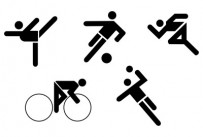What’s a Movement Screen?

What’s a Movement Screen?
Written By: Paul Kochoa, PT, DPT, OCS, CGFI
According to the Titleist Performance Institute, a movement screen is a gross assessment used to identify faulty stability patterns and altered mobility.1
A movement screen is better than isolated musculoskeletal exams because it takes the whole body into account to find the problem so you don’t “lose the forest for the trees”. It’s not just one joint at a time, but the whole picture at once.
But let’s back up a bit and talk about mobility and stability.
Mobility is the combination of the normal range of motion of your joint and muscle flexibility.
Stability is the combination of three things: balance, strength, and muscular endurance. Basically it’s the body’s ability to remain unchanged or aligned in the presence of change or outside force.
The combination of the two results in a pattern observed in the human body in relation to movement. As per Gray Cook (physiotherapist) and Michael Boyle (strength coach) in the book Advances in Functional Training, the body works in an alternating pattern of stability and mobility. If this pattern is altered, dysfunction and compensations will occur.2
The normal pattern of stability/mobility is:
Foot = Stable
Ankle = Mobile
Knee = Stable
Hip = Mobile
Pelvis/Lumbar Spine = Stable
Thoracic Spine = Mobile
Scapula-Thoracic = Stable
Shoulder = Mobile
Elbow = Stable
Wrist = Mobile
Neck = Stable
As you can see each segment of the body is connected. The stability of one segment allows for the mobility of the next one, all working together as a kinematic chain that results in pain-free movement and function, whether it be hitting a ball or just getting up from the toilet. So your problem with your knee might not be totally a problem with your knee, but an issue with your hip or ankle. The knee is supposed to be a stable segment. However, if it loses its stability and becomes mobile because of a deficit with the ankle mobility or the hip mobility, then you end up with a movement dysfunction (and probably some pain). The trick is seeing which it is and that’s where a good physical therapist comes in with the movement screen.
But what causes alterations in this pattern?
Well, it basically boils down to the four “T’s”: Trauma, Thoughts, Toxins, or Technique.
1. Traumas are any accidents, posture deficits, or repetitive injuries that occur with movement.
2. Thoughts include stress, anxiety, mental collapse or any other psychosocial performance issue that can affect movement.
3. Toxins are what you eat, what you breathe, and what you drink (poor diet equals poor health).
4. Technique includes poor learned skills or movement patterns (sport specific training comes to mind here).
So observing the movement deficits and analyzing what caused the problem are the two pieces of the puzzle that can increase the likelihood of a quick, successful recovery. For more information, contact the physical therapists at Professional Physical Therapy and Training, conveniently located in the Madison and Summit Area YMCAs.
1Level One 2010 TPI Golf Fitness Instructor Certification coursebook. 2010.
2Michael Boyle. Advances in Functional Training. Aptos, CA: On Target Publications. 2010.
